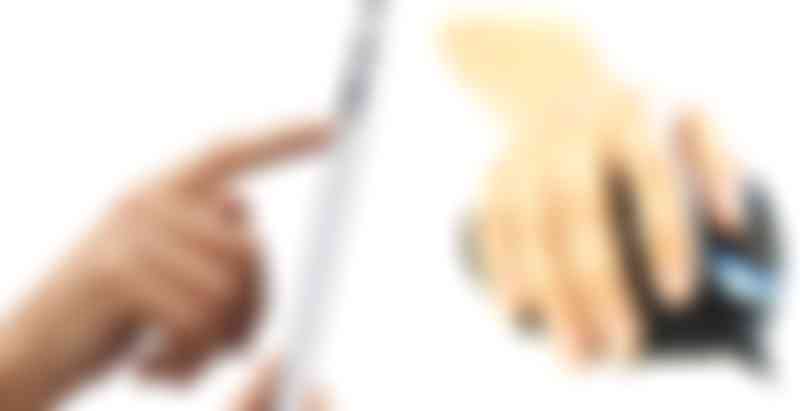Thu Mar 13 2014
A simple drawing app using JavaScript
The HTML Canvas element was introduced by Apple in 2004. It was originally created to power the Dashboard concept introduced in OS X 10.4. The Canvas element was a part of Apple WebKit from 2004, in 2005 it became a part of Mozilla browsers and then Opera. Today, all browsers worth using sports support for the Canvas element. In this article I'll be creating a demo involving a simple line drawing on a Canvas element.

To be a proper red line drawing application today there are several considerations to be taken into account.
- You must support both touch devices and dusty old mouse enabled devices
- You must take Hi-res or retina devices into consideration. You wouldn't want blurry red lines now would you.
- The thing needs to be performant
Take a look at the full CoffeeScript code for the demo. It has a bunch of comments.
Supporting touch and mouse events
From line 8 in the code. Here we check if the event «ontouchstart» exists in the window object. If it does we know that this device supports touch events. We then keep this result in the «mode» property for use later on. Easy peasy. Let's add som listeners.
We use the «mode» property and add touch and mouse listeners. Note that we do not add any listeners for when the mouse is moving, this we do in the mouse up and down events. See the section at the end of the article as an explanation as to why.
So, what the hell does it mean to add a listener to "@"? In CoffeeScrip the "@" is the same as "this" in JavaScript. By adding event listeners to "this" we can implement the half-magical «handleEvent» method. This method will not only handle all events on "this", but it will also maintain scope, removing the need for «Function.bind». If you didn't know that, you mind has just been blown - right?! Moving on.
Supporting retina quality graphics
This is a tiny bit trickier, but not much. What we need is to know the scale factor of the display of the device. We can then use this number to calculate the size of the canvas itself and how lines are drawn.
Let's start with finding the scale factor.
If there is a property on window called «devicePixelRatio» we use that value, if not we default to 1, which basically means that it's a "normal" display or a piece of shit old browser. The «devicePixelRatio» will output a multiplier, like 2 for the iPad Mini Retina. This number gives us the value on which to multiply.
Scaling the canvas element correctly
Calculating the size of the actual canvas element looks something like this (if you want the canvas to span the entire browser window).
On a "normal" display the width of the canvas would be equal to the inner width of the window. On an iPad Mini Retina it would be «innerWidth x 2», because the «scaleFactor» of the iPad Mini Retina is 2.
It's important to note that the canvas element is now twice or more the size of what you intend to display it at. You fix that by setting the style width and height to the intended display size, which in the case of an iPad Mini Retina will be half the size of the canvas backing store (the actual drawing size).
Scaling the drawing context
The «ctx» property holds the 2d drawing context of the canvas. On the second line we tell the context that any lines drawn, should be red - of course. On the third line the thickness of the line is set and like we did with the canvas backing store we multiply with the scale factor. Remember that a canvas on the iPad Mini Retina is twice the size of what it's displayed as (yep, yep). If we didn't multiply the line thickness if would actually display at 2.5..and that would be stupid because we want it to look the same everywhere, except it will look sharper on retina displays.
The same multiplication also needs to happen every time we either move the drawing pointer or draw a line. If we didn't do this the line would be drawn with an offset of the finger or the cursor - again, we don't want that. And that's it, ha!
Other stuff
For mouse mode, it's also a good idea to remove the «mosemove» listener when the move isn't pressed. This way you won't get a bunch of events firing all over the place when you really don't need them.
That's all folks.